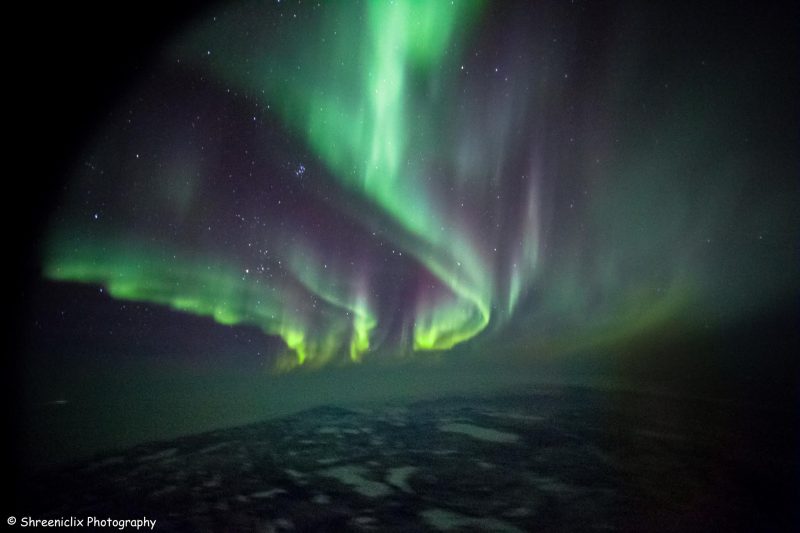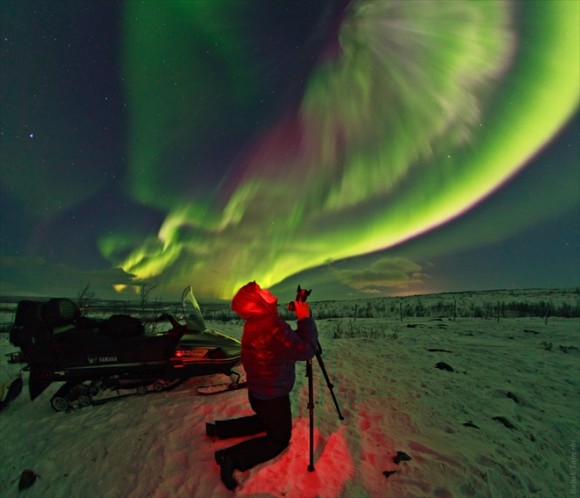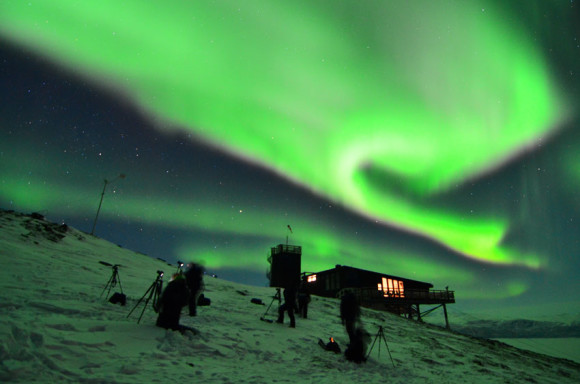
Spaceweather forecasters at NOAA are now estimating a 65% chance of geomagnetic storms on January 3 and 4, 2017, thanks to a huge Earth-facing coronal hole. The Space Weather Prediction Center will be providing updates on what it calls a “minor” storm. Auroras expected from about 60 degrees N. and poleward, with possible sightings at latitudes like those in the northern U.S. Read more about the coronal hole here. The aurora borealis, or northern lights, are caused by activity on the sun. They are bands of light, created when charged solar particles interact with Earth’s magnetic field. Witnessing the aurora borealis is an experience not to miss. However, sightings are never guaranteed. Many factors can have an impact on whether the lights will appear. Follow the links below for answers to some of the most commonly asked questions about seeing the aurora.
What causes the northern lights?
How can I get updated information about who will see the lights?
Will the moon affect my ability to see the northern lights?

What causes the northern lights? Good news. The sun itself will make the announcement. Aurorae are the result of solar activity, where colossal storms take place on the sun’s surface. Sometimes during these storms, charged particles from the sun are released. If the solar storm erupts in such a way that the resulting charged particles head toward Earth, the likelihood of seeing an aurora increases.
It takes several days for the charged particles to cross from the sun to Earth, so there is plenty of warning. When the charged particles arrive, they interact with Earth’s magnetic field, creating what is known as a geomagnetic storm. To what extent these charged particles will light up the night sky depends on a variety of factors including the strength of the CME plus whether it struck Earth’s magnetic field directly, or just delivered a glancing blow.

How can I get updated information about who will see the lights? As of the morning of January 4 (around 12 UTC), the January 4 and 5, 2017 projection was for 60 degrees N. and further northward. Spaceweather forecasters were also talking about a chance of seeing the lights at latitudes like those in the northern U.S., for example, Michigan or Maine.
But the predictions can change.
NOAA’s Space Weather Prediction Center is a go-to site for aurora forecast updates.
Spaceweather.com is a reliable and readable source of information about activity on the sun.
Follow this link to find a list of aurora alert websites. If you follow some of those links, you’ll find some update their forecasts live on Twitter.
Those keen to discover more about Earth’s magnetic field, meanwhile, might like to check out SAMNET, the sub-auroral magnetometer network from Lancaster University.

Will the moon affect my ability to see the northern lights? Usually not. Naturally, a sky washed with bright moonlight won’t be as dark as it might otherwise be and thus the contrast between the aurora and night sky background won’t be as great. But only the very weakest aurorae will be completely drowned by the light of even a full moon.
In fact, LightsOverLapland.com photographer Chad Blakley, who regularly takes shots from the Abisko Aurora Sky Station in Swedish Lapland, has said that some of his best northern lights photographs have been taken when there was a full moon.
Read more: Can you see an aurora borealis when there’s a full moon?

What happens if it’s cloudy? The rule of thumb is, if you can see the stars, you can see the Northern Lights. Essentially, if the cloud cover is ‘thin’ enough not to conceal the twinkling stars, it shouldn’t make much difference. Thick cloud hovers underneath the aurora, so yes, it would block any sightings, unfortunately.
Can you hear the aurora? While not a concern, this is a frequently asked question. And the answer is … we can’t be sure. Many people say they have heard a sound when witnessing the lights, but the upper atmosphere, according to the University of Alaska, is too thin to carry sounds waves. Plus the aurora itself is too far away. Yet still observers describe whistling, bristling, swooshing sound. The only way to know is to experience the aurora borealis for yourself!
About the Author: Elizabeth Smythe wrote this post on behalf of northern lights holiday specialists Weekend a la Carte. Check them out more insights and guides into this most magical of wonders.
Bottom line: Answers to commonly asked questions about seeing one of nature’s wonders: the aurora borealis or northern lights. Be sure to check theSpace Weather Prediction Center for updates.











